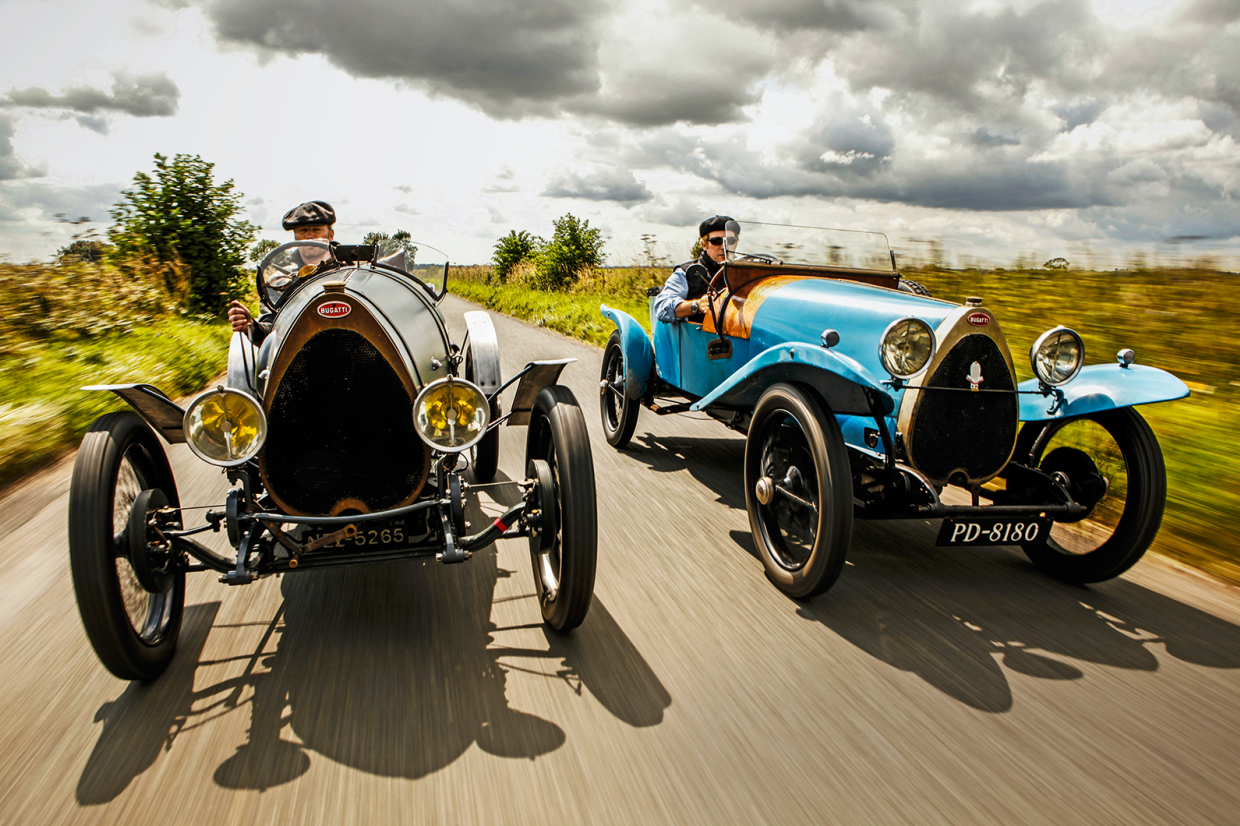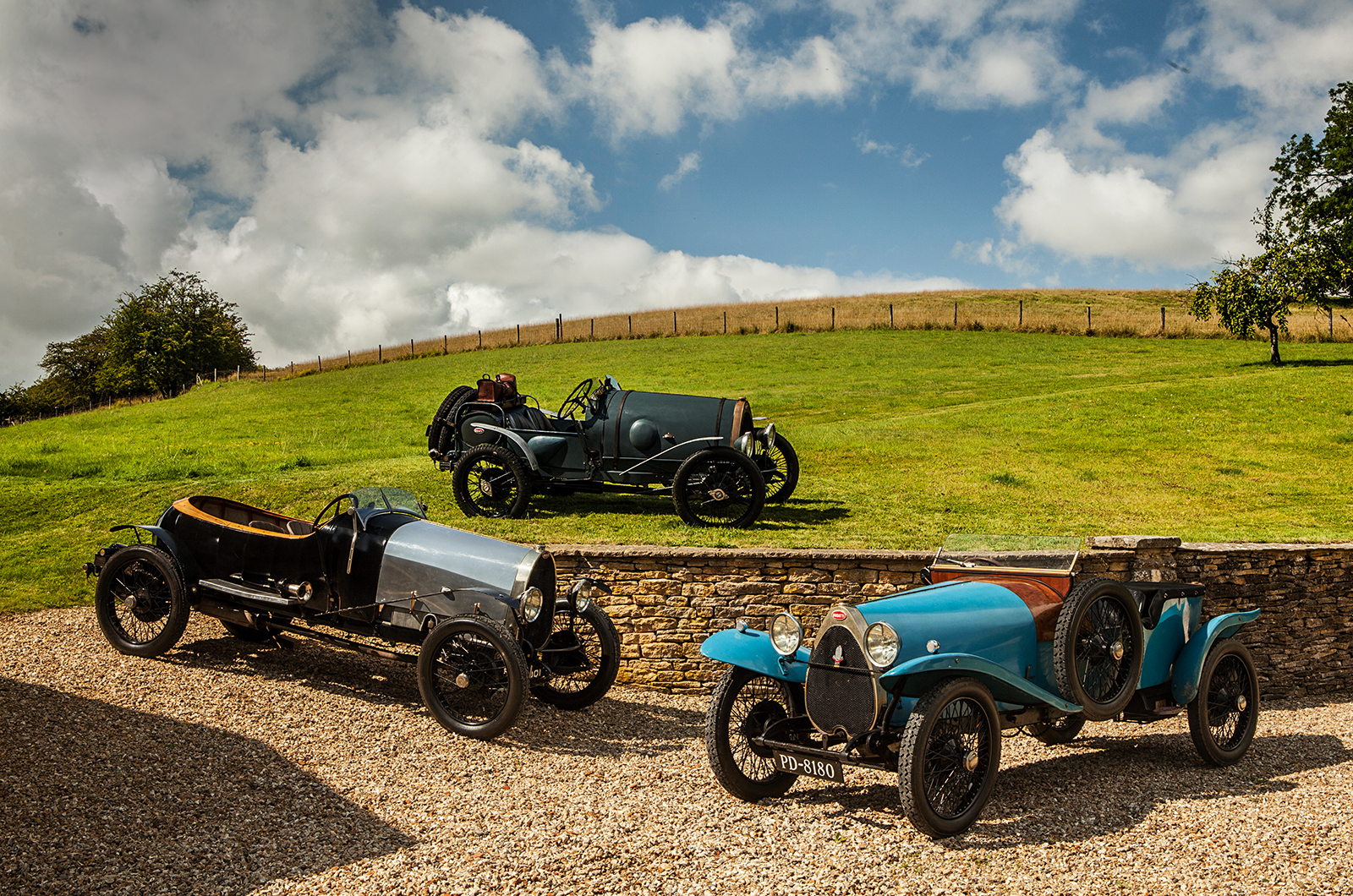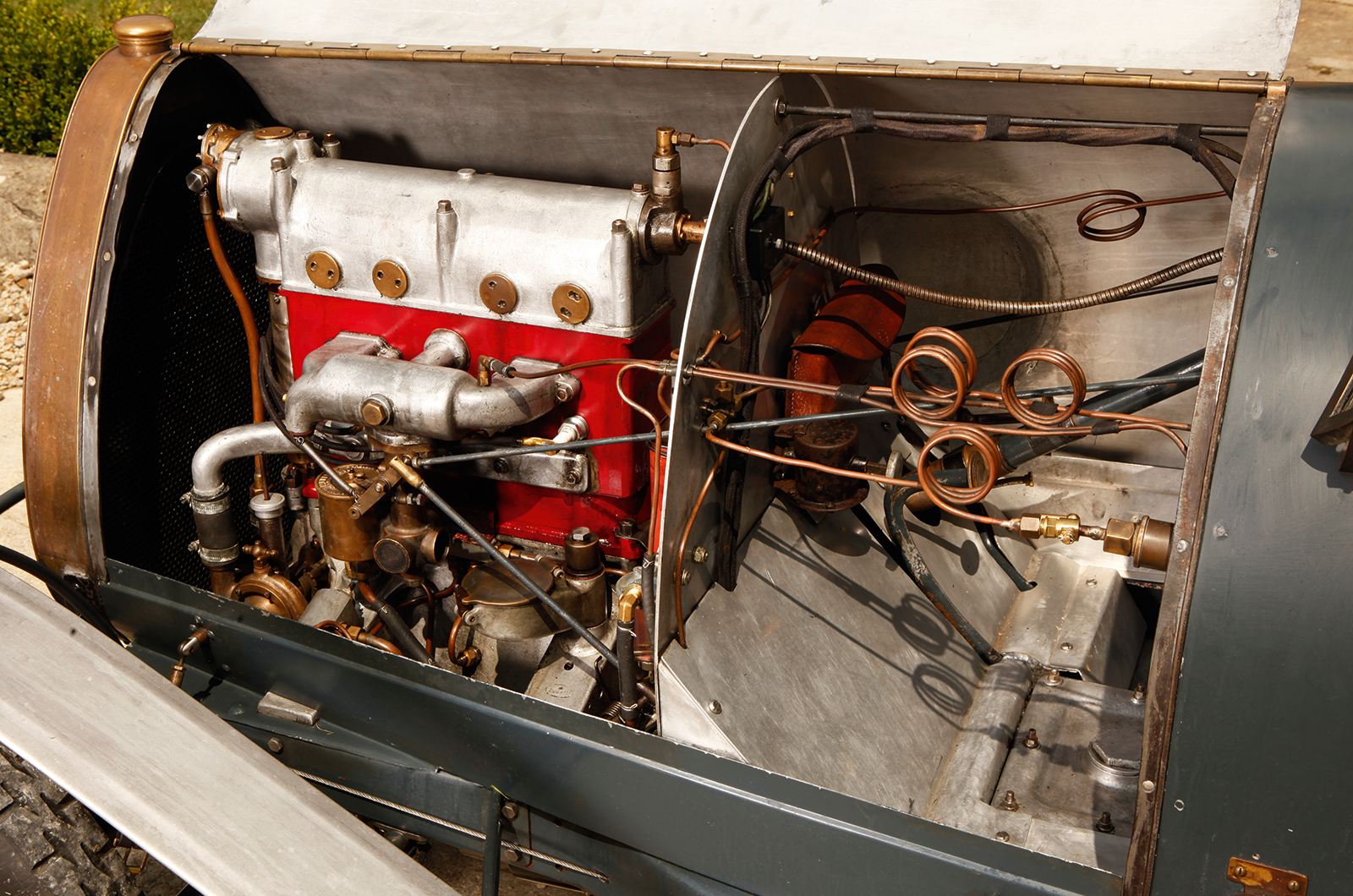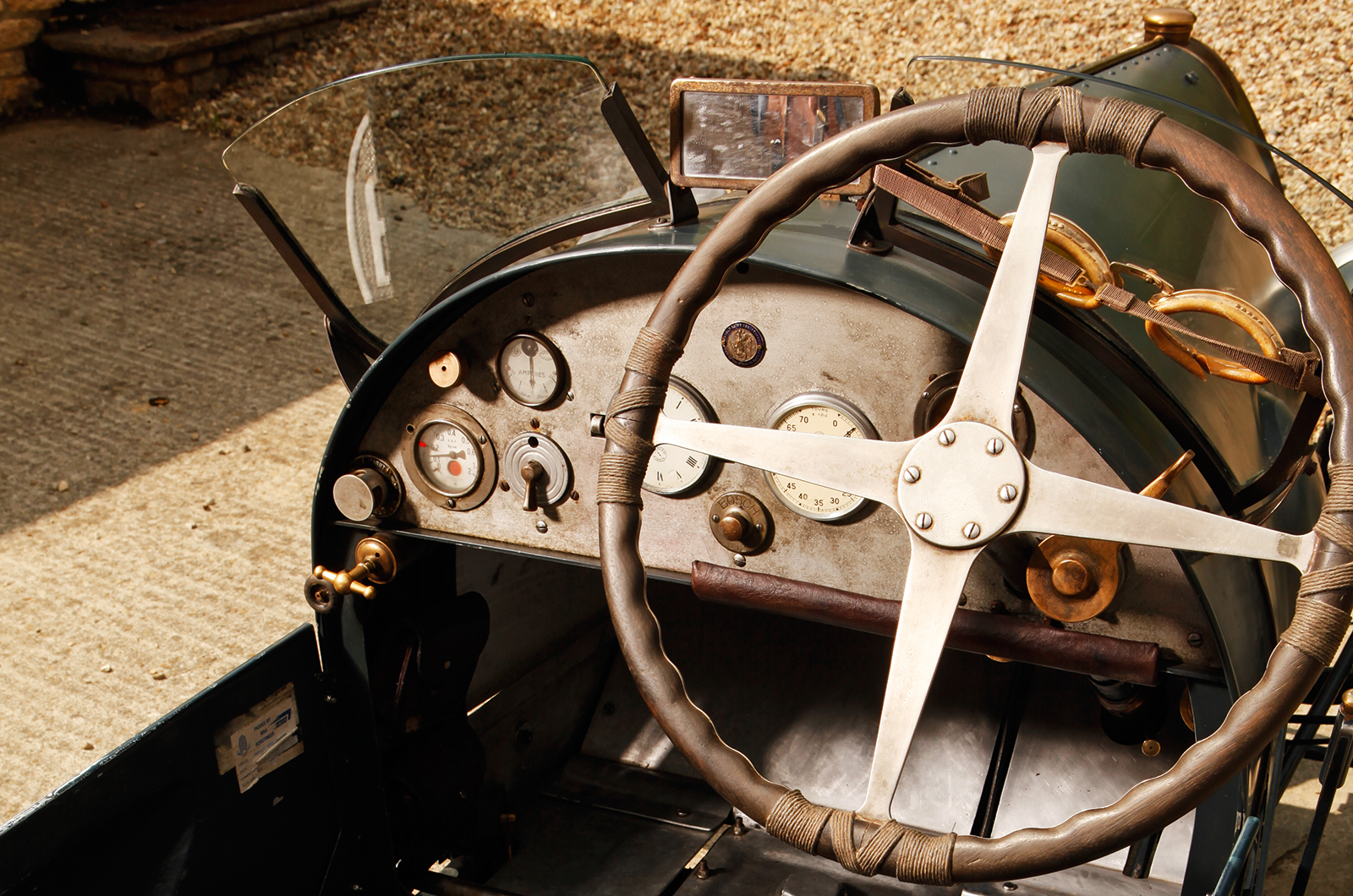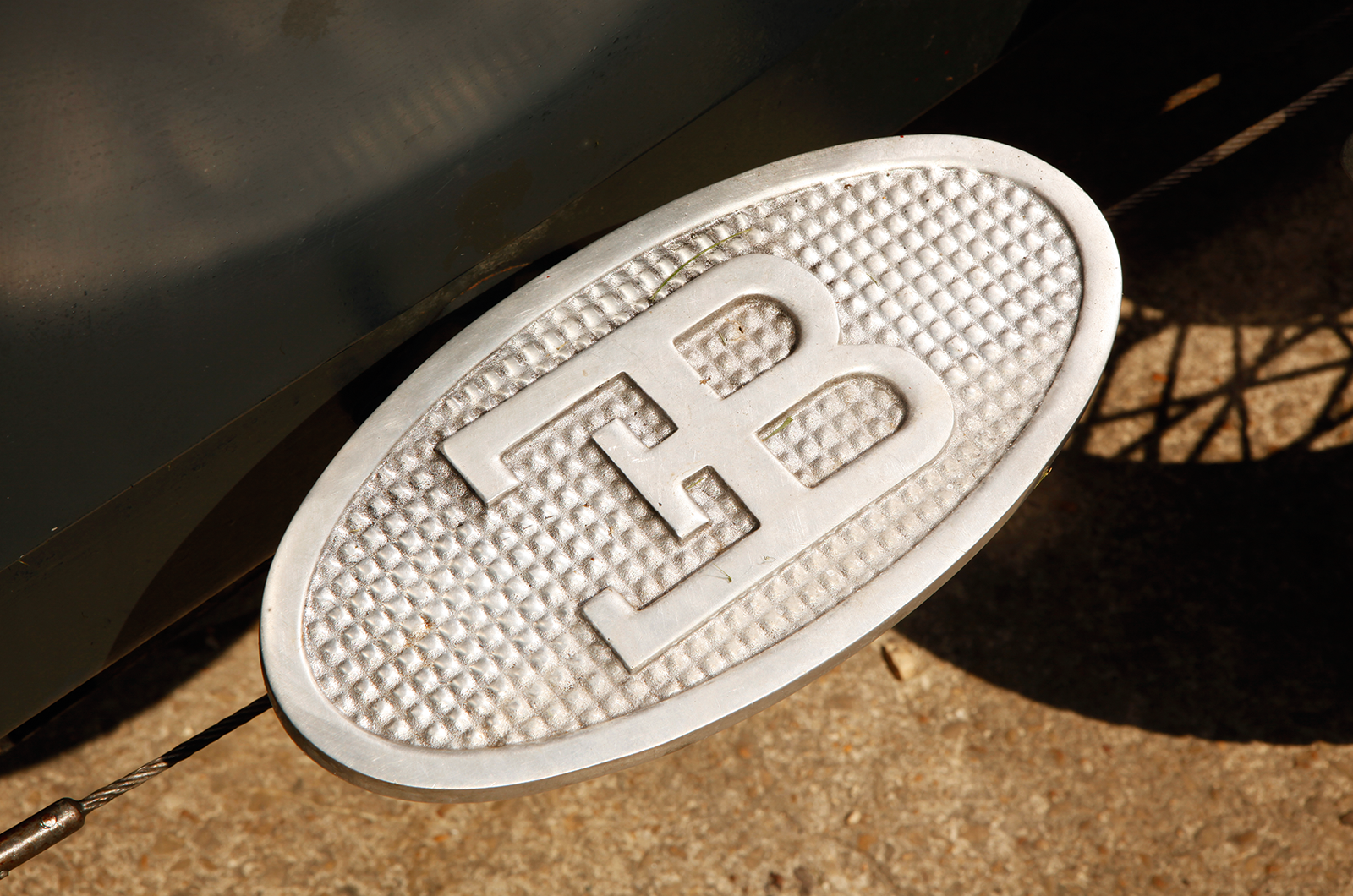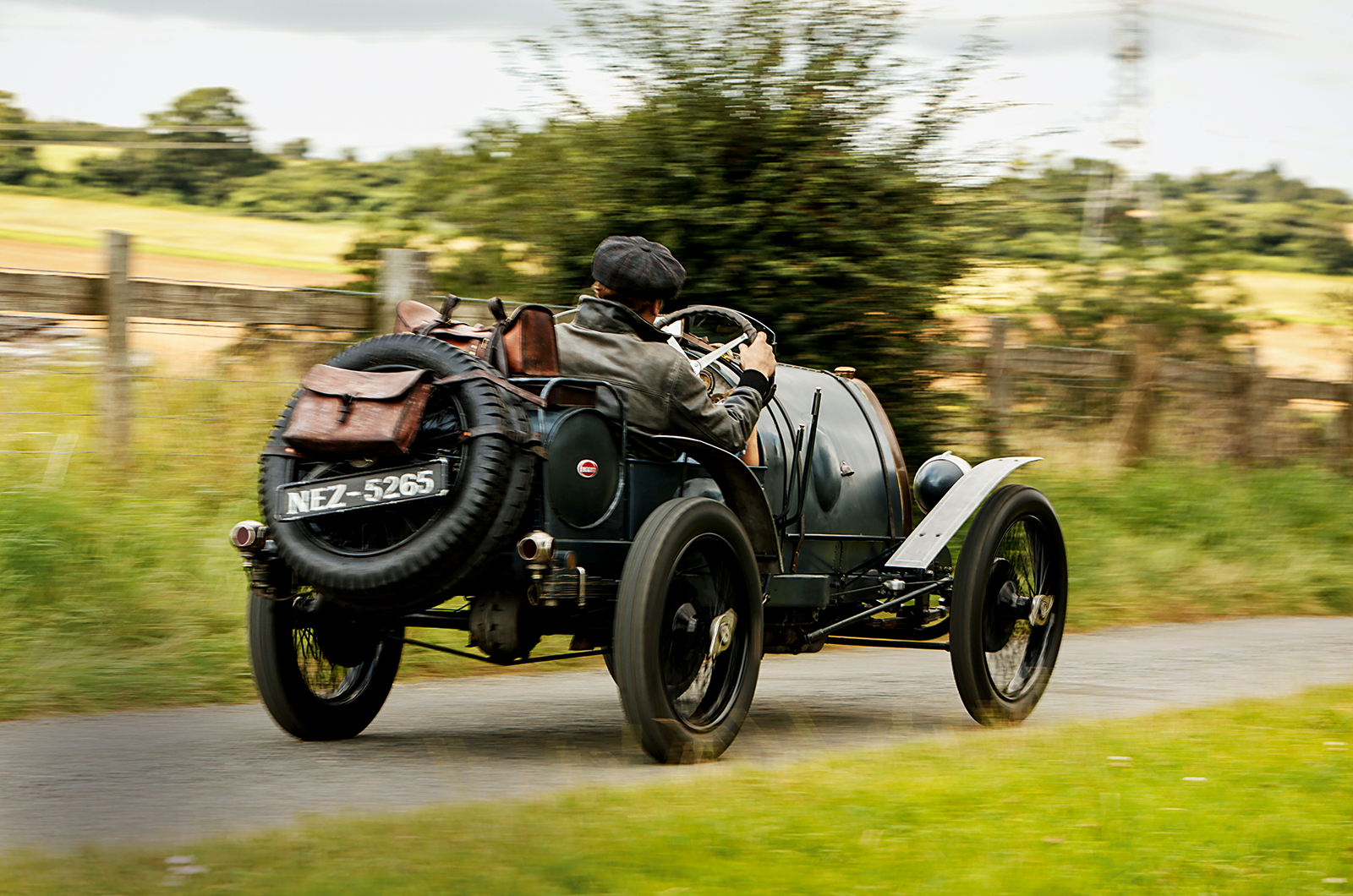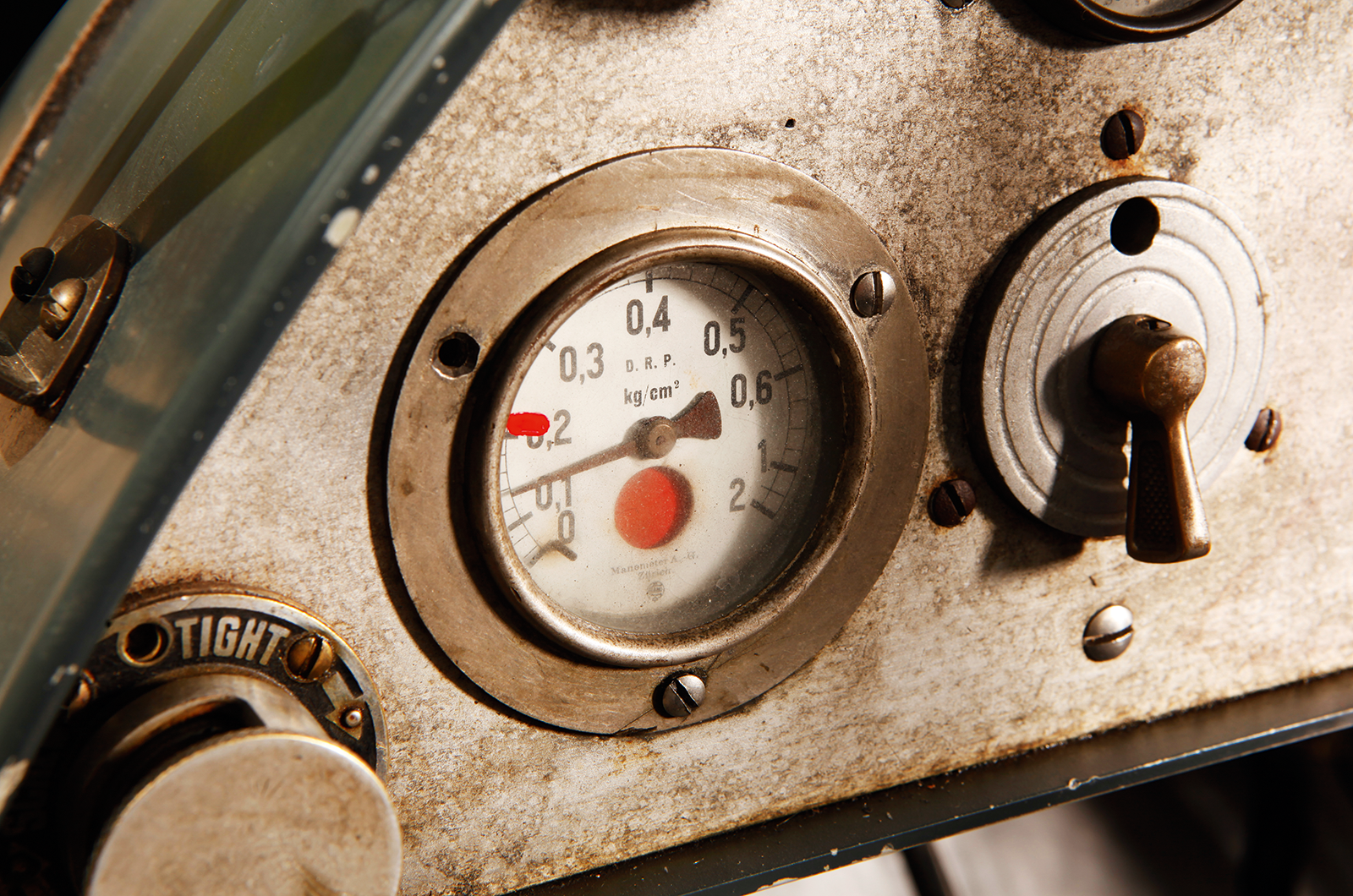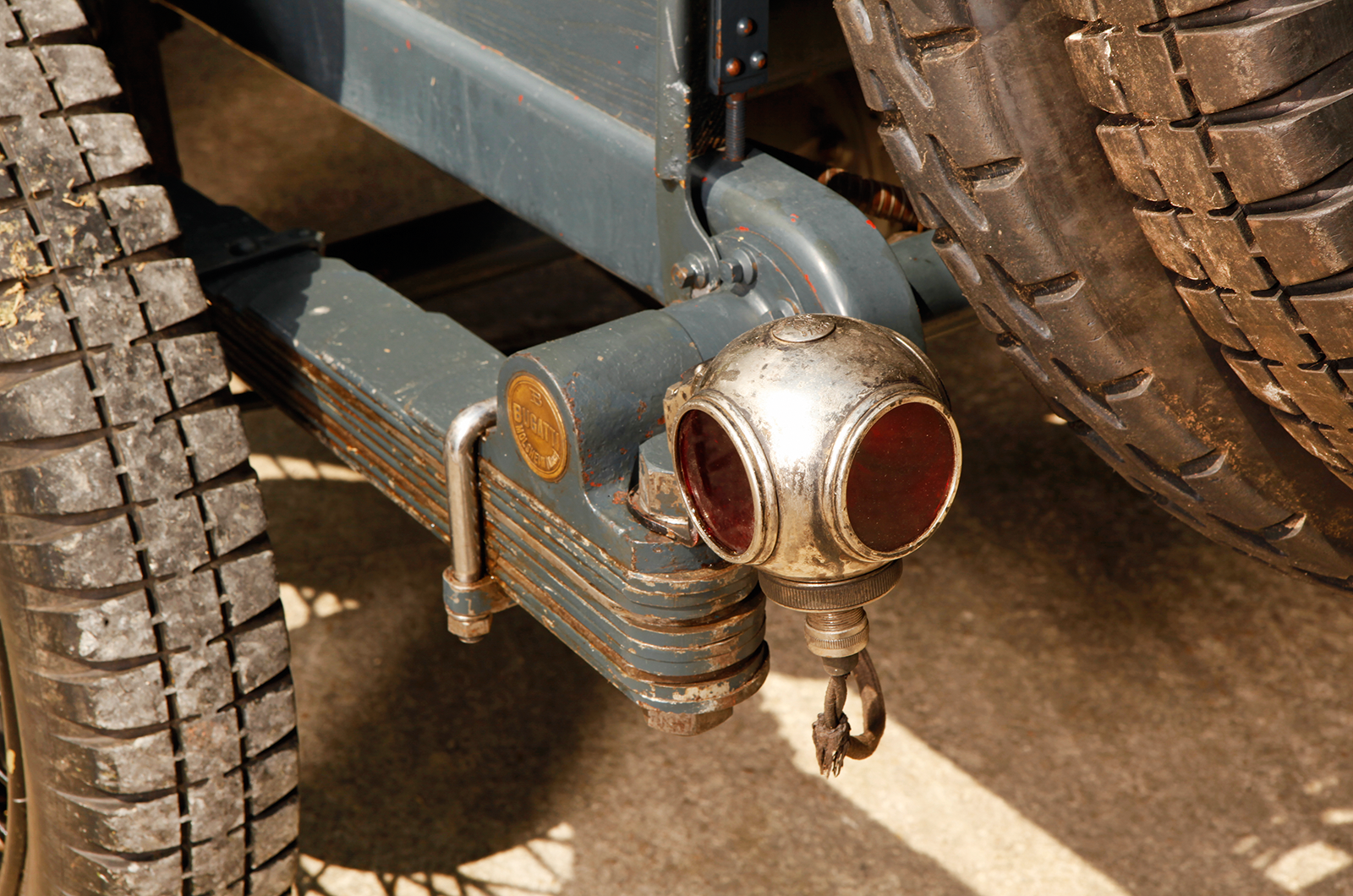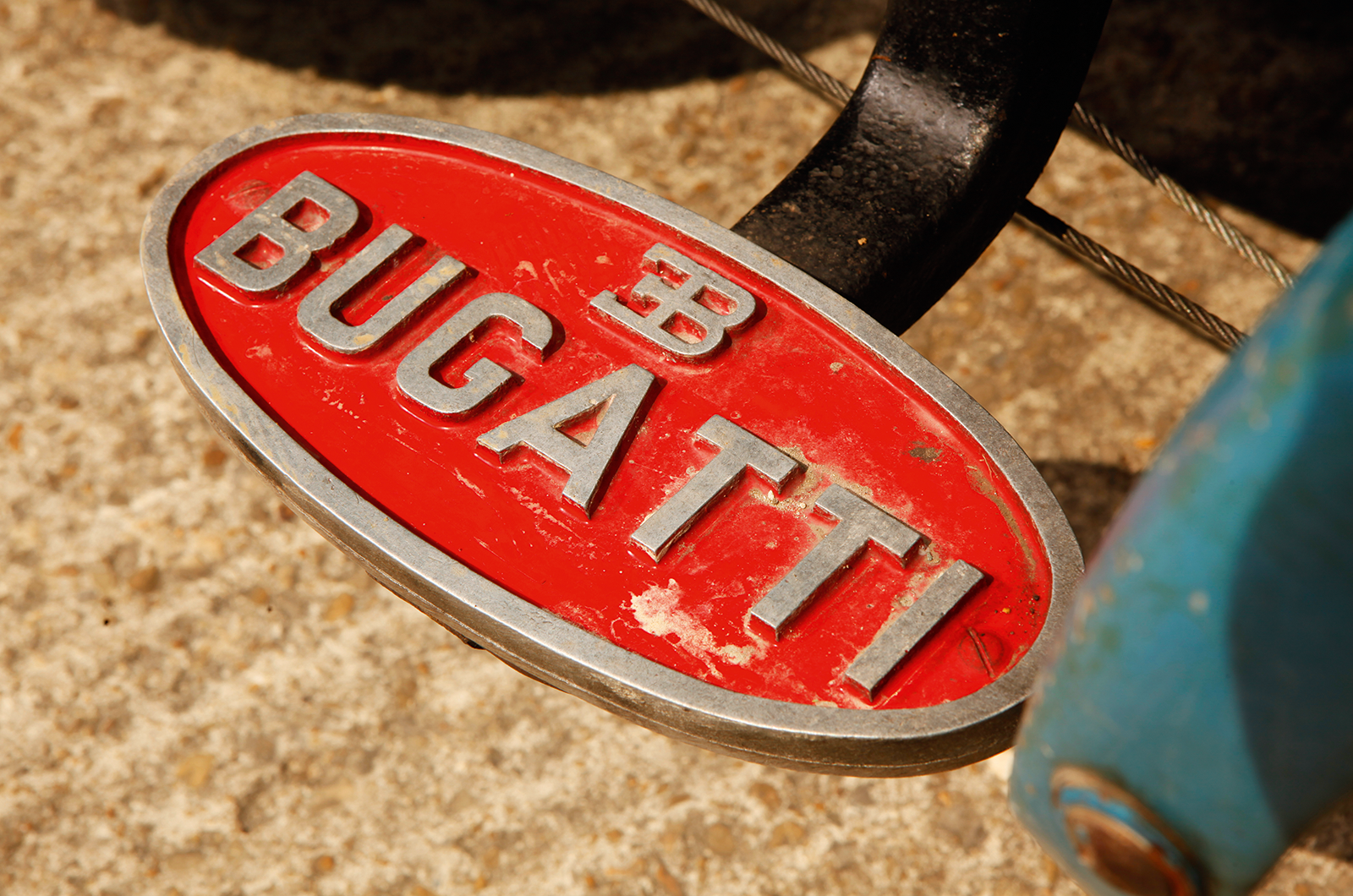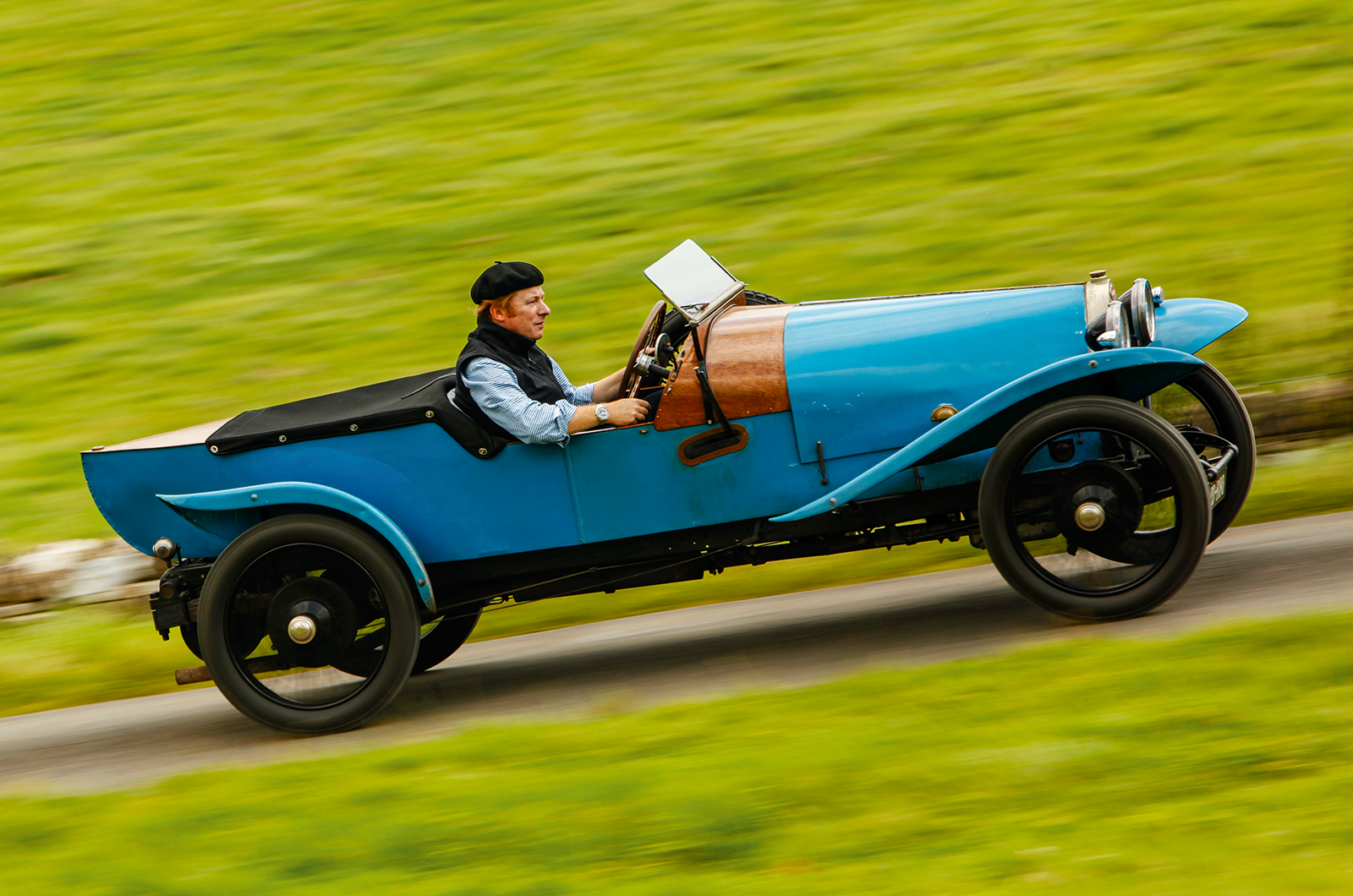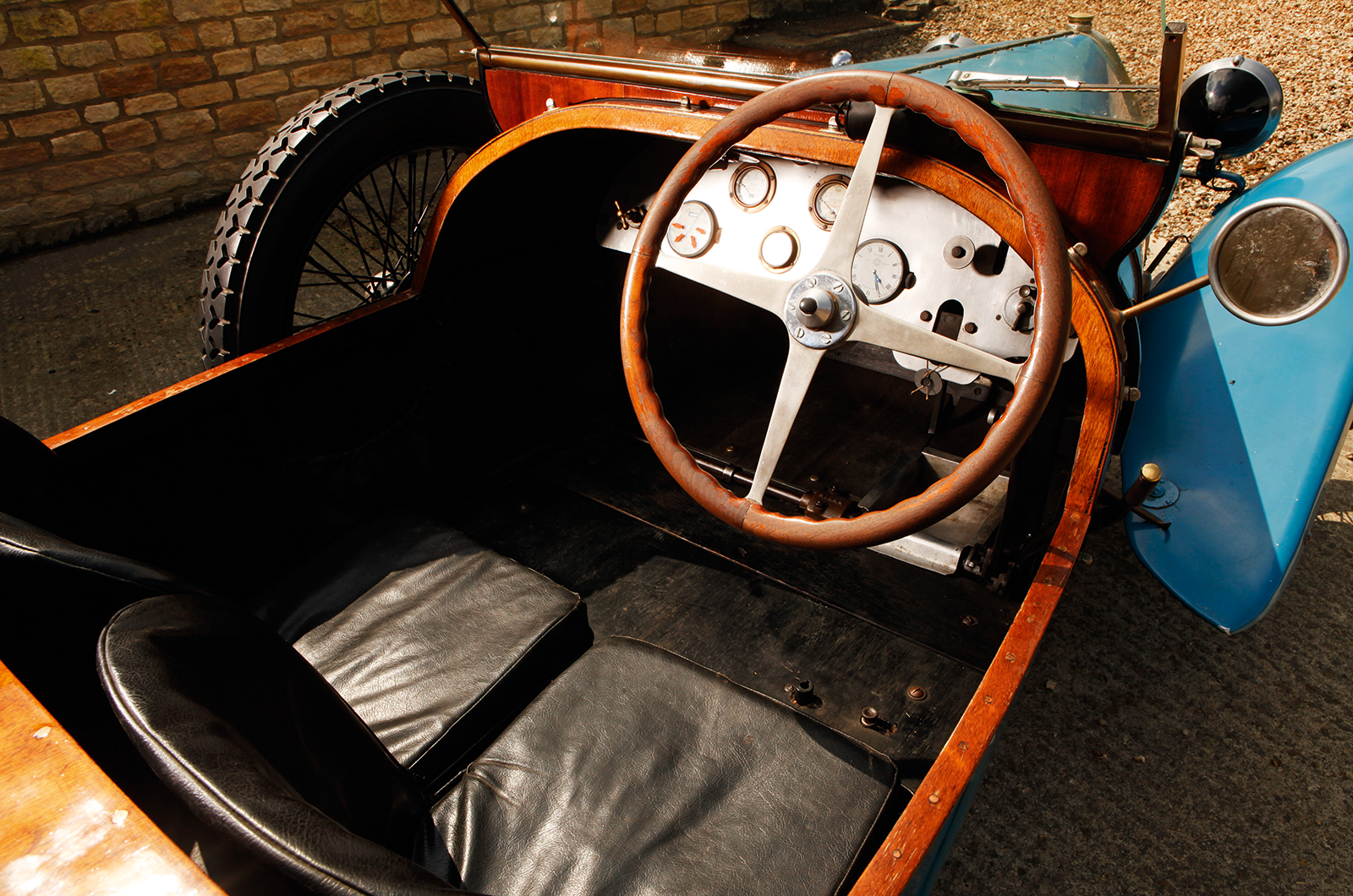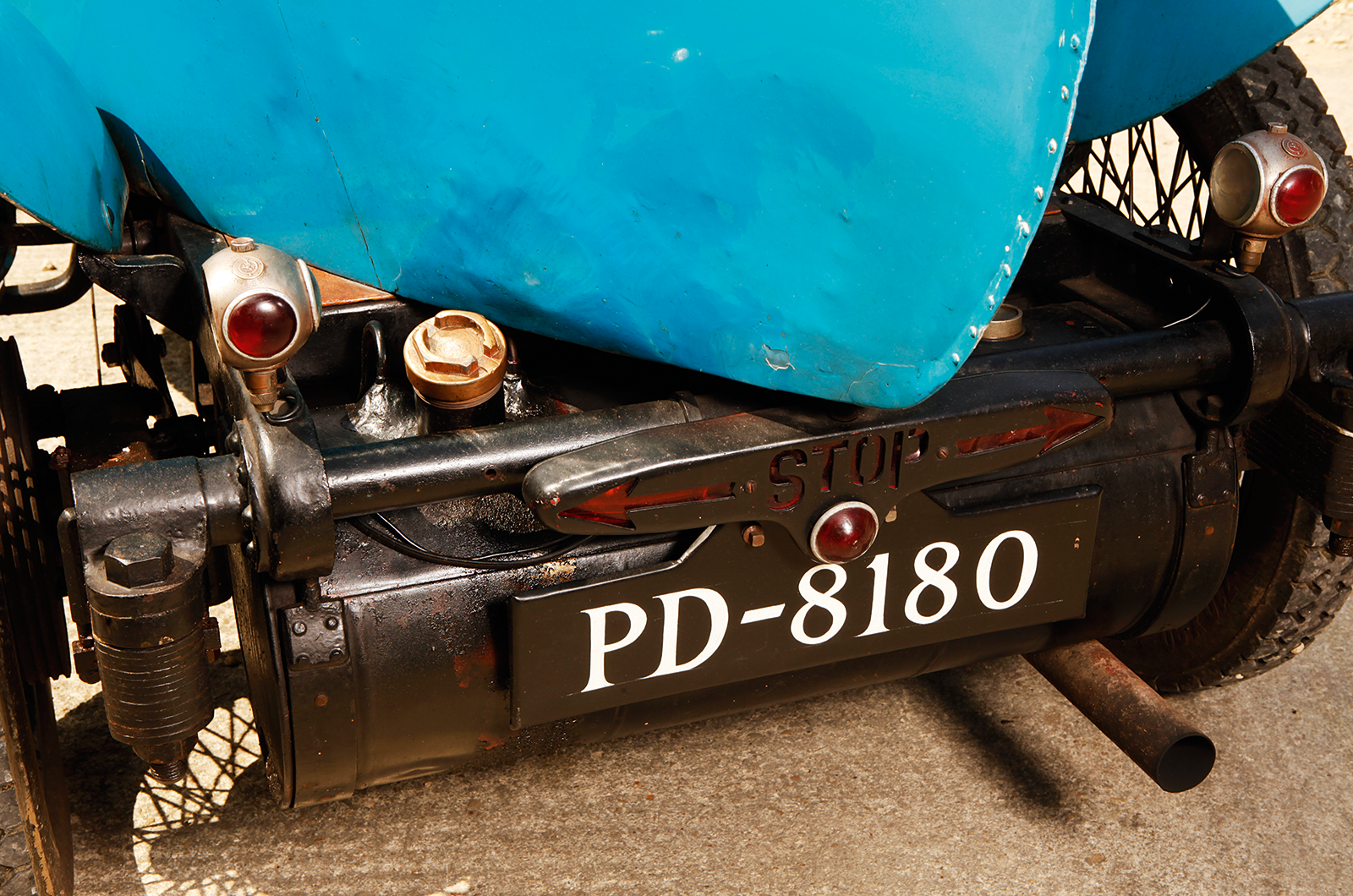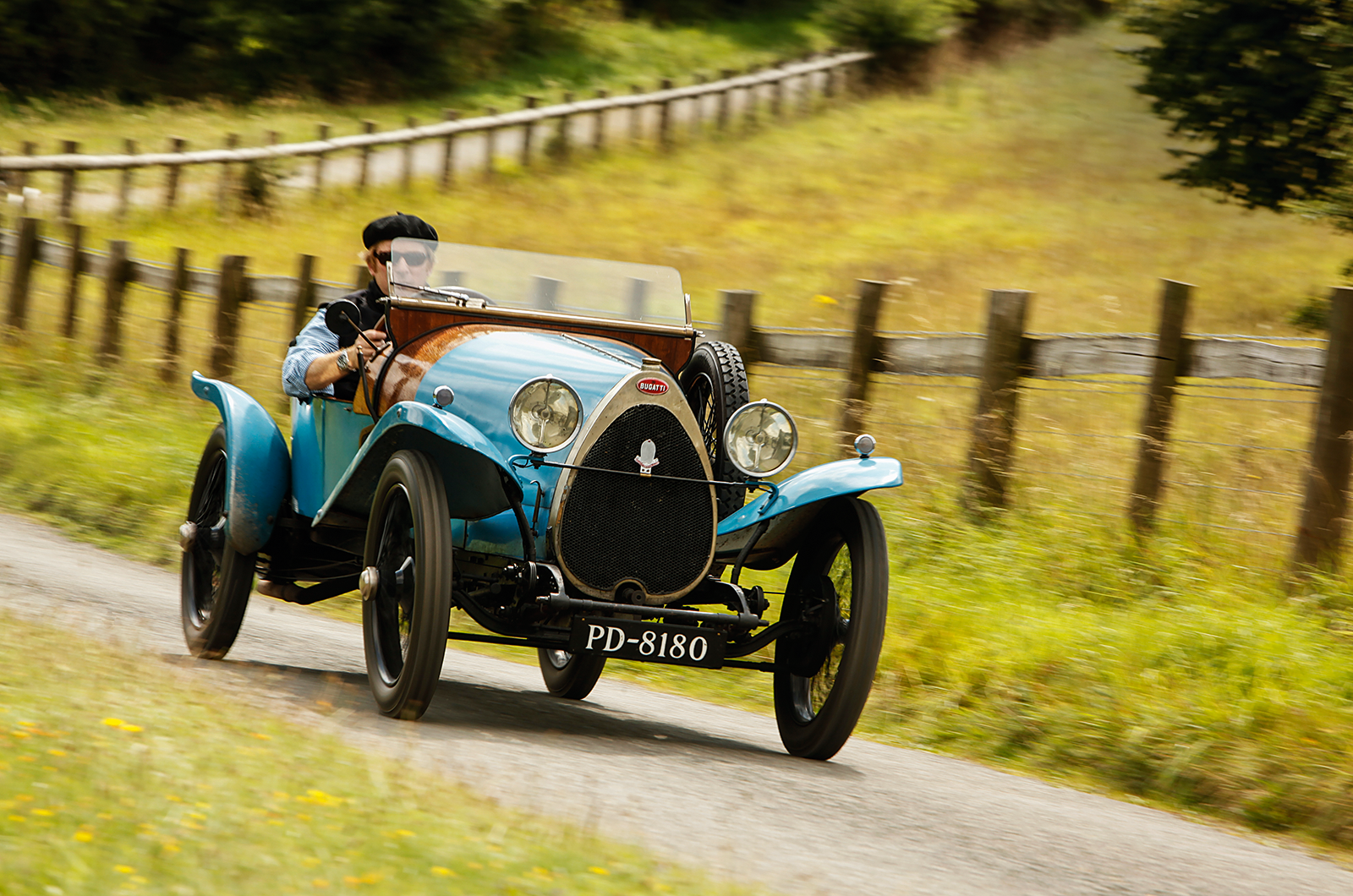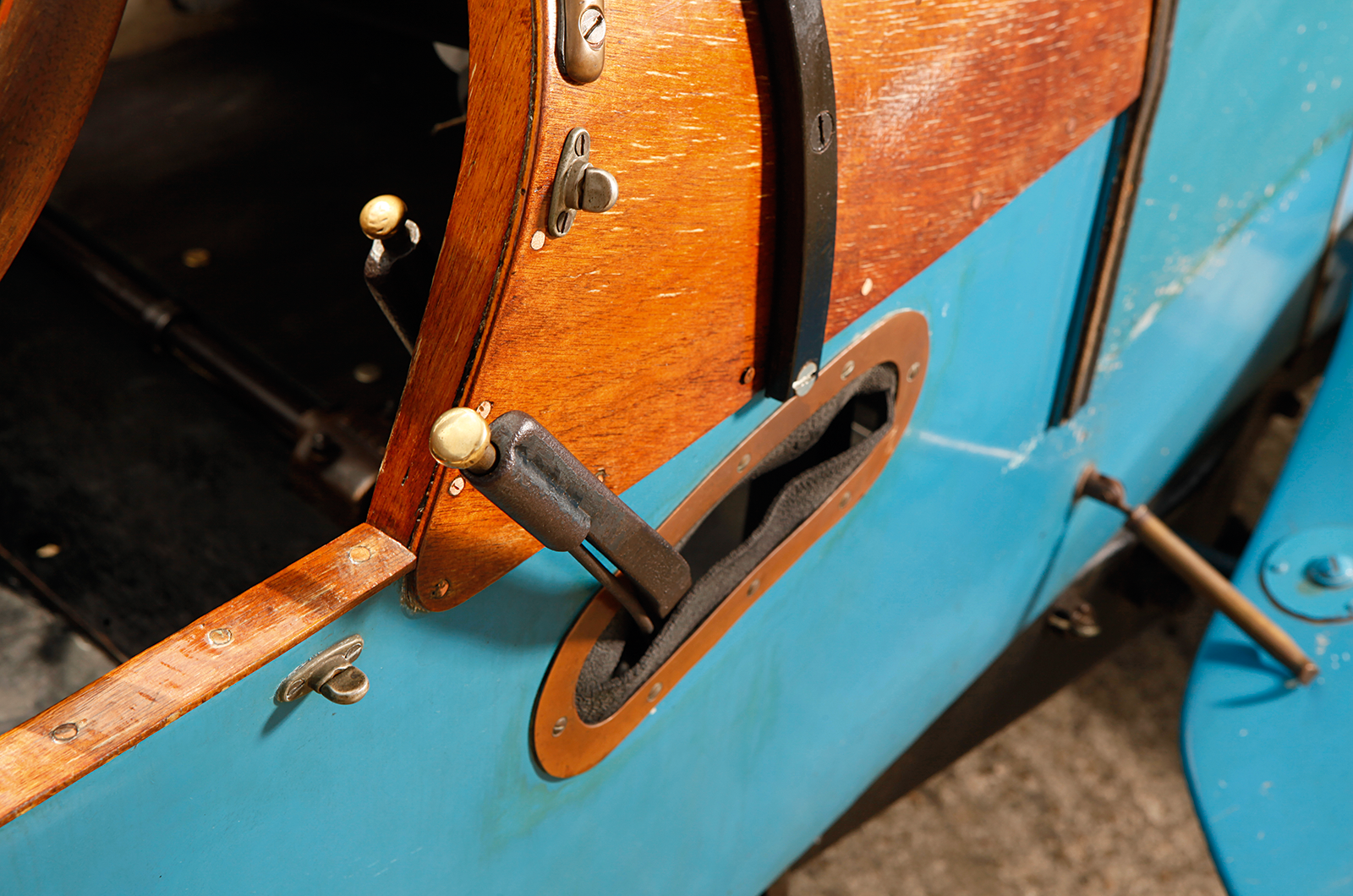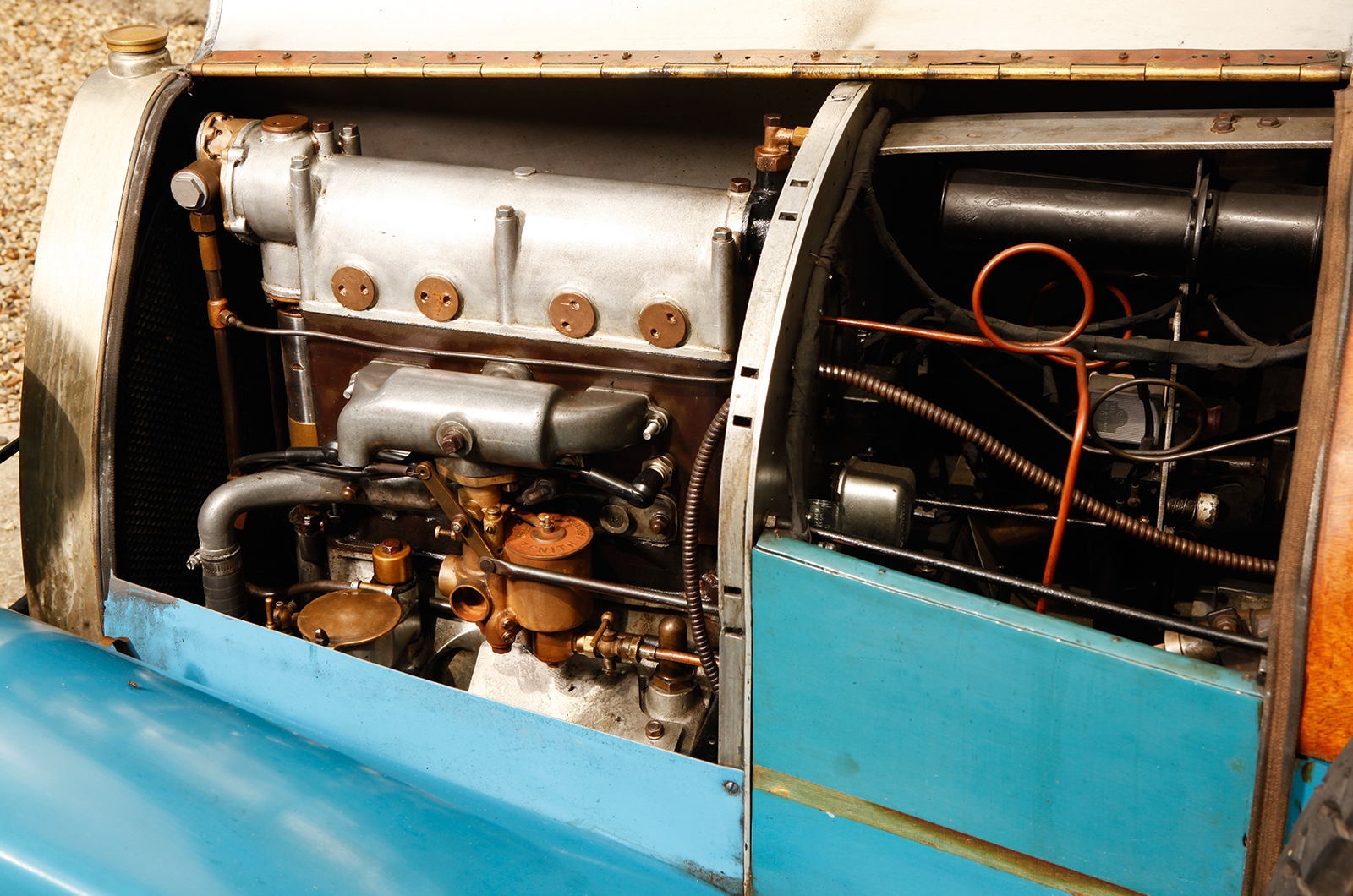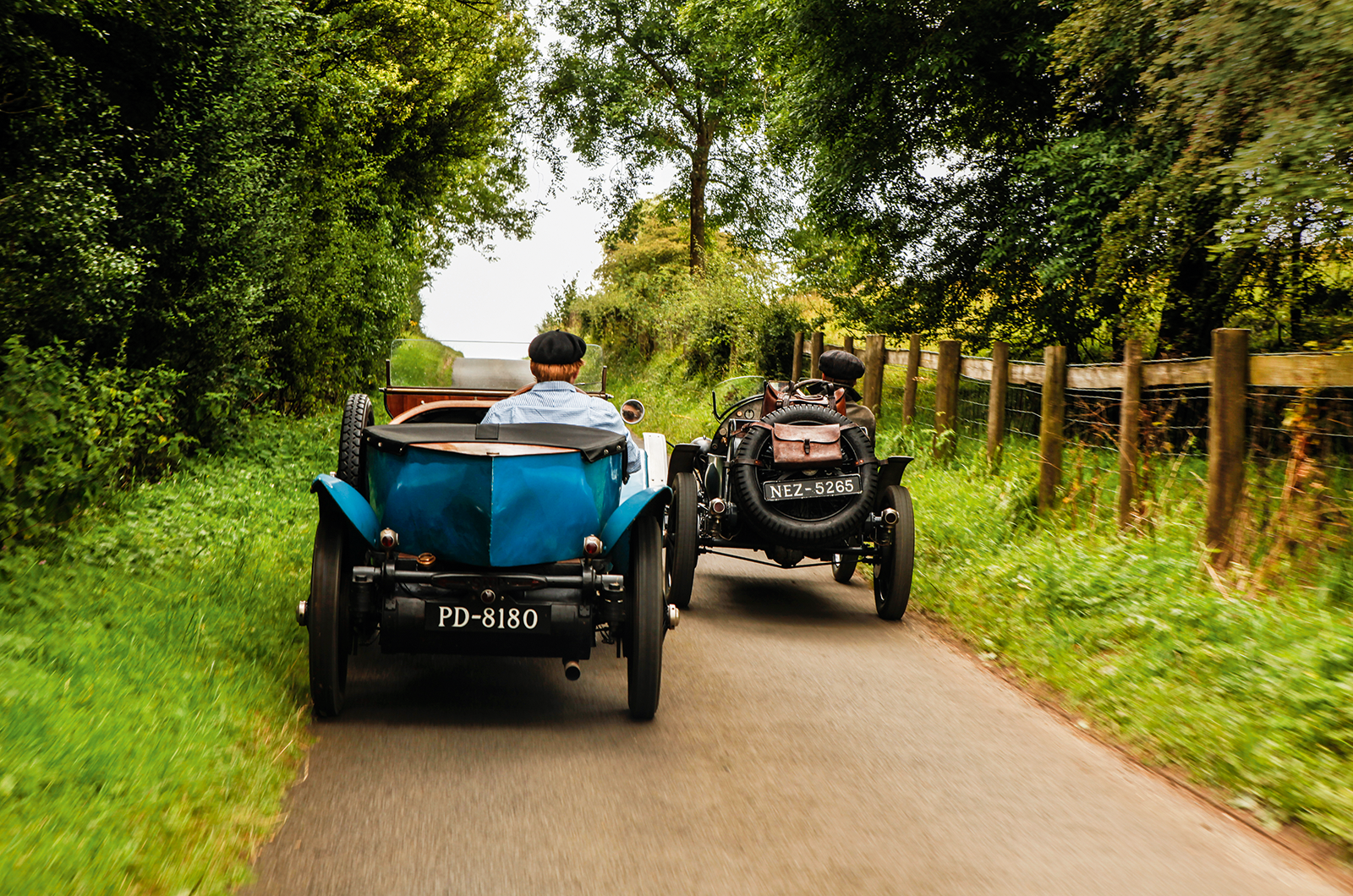Highlights for I’Anson have included regular trips to Prescott, where he’s taken his son up the hill as a passenger, and a fantastic all-Brescia rally around France’s Alsace region in 2013: “There were 40 on the event, which was fantastic fun.”
Like Knill-Jones and I’Anson, I’ve marvelled at the mud-plugging antics of Brescias on VSCC trials, and watched them tip up on two wheels around Prescott’s tight Pardon Hairpin.
The way that these nimble jewels carry momentum on skinny tyres through the fast, flowing Esses always impresses.
I’ve also ridden with two of the most committed Brescia pilots – Rodney Felton and James Diffey – neither sadly still with us.
The Type 23 has an external handbrake
Once, on the way home after the Welsh Trial – with Diffey going like the clappers as always – I suddenly spotted a wire wheel passing us, and instantly the famous picture of Raymond Mays three-wheeling his rapid Brescia ‘Cordon Rouge’ at Shelsley came to mind.
Thankfully, Diffey’s masterful car control avoided an inversion and injury as we slithered to a stop, sparks flying from the grounded brake drum.
Other than a few brief drives, I’d never had a proper go in a Short Chassis Brescia, particularly one as sorted as that of Knill-Jones.
The rudimentary, exposed bodywork is a snug fit, and is best entered from the passenger side to avoid the tall external handbrake and gearlever.
The high wheel initially feels close, although the steering’s fantastic light action doesn’t require much arm
work. It’s as responsive as a motorcycle once on the move, and demands a similarly smooth technique. The throttle and brake pedals are very tightly placed, but its trusting owner advises me to use just the handbrake so it isn’t a problem.
There is no lack of power with the single Zenith
The liveliness of the engine is immediately apparent, and it takes a while to adjust to this surprising trait.
This vintage motor loves to rev. Match that eager power to a superfast gearchange that’s as slick as a Grand Prix Type 35, and you soon appreciate why the Brescia can match much more powerful cars on a twisty route. The ratios are closely matched and, with such urgent torque, you’re soon flying along in top.
The Short Chassis initially feels nervous – particularly on a bumpy B-road – but its brilliance is clear once you relax and tune in to its sharp, fast attitude.
The Brescia’s impressive pace focuses your mind on the road ahead because braking is limited with those narrow, tiny drums, and emergency stops don’t bear thinking about.
An irresistible pair
This is the Lotus Seven of the vintage era, and I can’t imagine the stunned reaction of motoring journalists in 1923.
Little wonder the likes of Henry Segrave, Brooklands ace Leon Cushman and a young Raymond Mays were quick to order one. Moffatt had a great eye for form, as his car’s skiff-style coachwork and flared wings demonstrate.
The Long Chassis is a much more relaxed, less exposed experience. The steering and the gearchange – now inside the wider body – have the same light, instinctive feel, but the extra inches in the wheelbase create more refined and less nervous behaviour.
The engine has impressive flexibility and, when combined with the improved ride quality plus more progressive handling, it makes a better touring car.
Choosing between the two is tough. As a wealthy motorist living in the ’20s, I’d go for the long-wheelbase model with a stylish Lavocat et Marsaud four-seater body to take friends out on road trips along the Côte d’Azur.
But today, the challenge of VSCC trials following in the wheeltracks of much missed heroes Moffatt, Felton and Diffey would make the devilish charms of a classic Type 13 irresistible.
Images: Tony Baker
This is based on a feature that was originally in our January 2015 magazine; all information was correct at the date of original publication
READ MORE
The unholy trinity: Bugatti Chiron vs Veyron vs EB110
Bugatti Type 55: a Bug’s life
Tourer de force: Maserati Tipo 26
Dream drive in a mighty Alfa Romeo Monza
Mick Walsh
Mick Walsh is Classic & Sports Car’s International Editor
